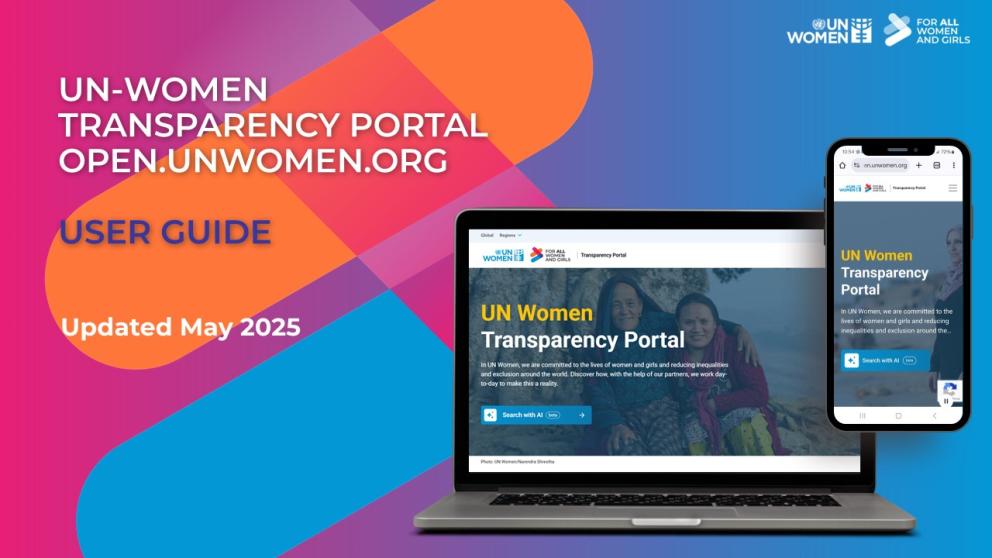About transparency
About transparency
Transparency and accountability are fundamental principles for UN Women in delivering development and humanitarian results for women and girls around the world. After UN Women became a signatory to the International Aid Transparency Initiative in 2012, it began publicly disclosing its information on Strategic Notes and development results and making it easier for all stakeholders to find, use and compare standardized data.
UN Women has since successfully implemented measures to deepen transparency in operations, including by positioning transparency in the Strategic Plan 2022–2025.
UN Women’s investments in accountability and transparency, including to institutionalize results-based management and improve the collection of high-quality data, have continued to improve its ranking under the International Aid Transparency Initiative. A 2017 score of 40 out of 100 had risen to 88 by 2022, when UN Women ranked sixth among 27 United Nations entities on the initiative’s registry, despite being one of the youngest organizations.
Open.unwomen.org is UN Women’s own Transparency Portal. It aims to improve access to UN Women’s results and financial data and keep the public updated on results delivered by all UN Women country, multi-country and regional offices (under Our Reach). The portal also hosts UN Women’s global annual reporting data (under Our Global Results), showing annual performance against its Strategic Plans.
These efforts not only make information about UN Women’s work easier to access, understand and use, but further fuel an ongoing drive to make the organization more efficient, responsive, collaborative and better able to deliver on its commitments to women and girls, especially those who are most disadvantaged and marginalized.
Using open.unwomen.org
Open.unwomen.org enables users to find information on global and country results as well as funding partner details categorized broadly by location, funding source and thematic area. It allows users to drill down through comprehensive results data, including on budgets, expenditures, United Nations partners, contributions to the Sustainable Development Goals (SDGs) and more.
Revenue recognition is based on management accounts reporting, per revenue management policy. Financial numbers are not certified. Certified numbers are available at the end of the year.
The maps on open.unwomen.org are from the Geospatial Information Section of the United Nations. The boundaries and names shown and the designations used on the maps do not imply official endorsement or acceptance by the United Nations. The final boundary between the Republic of Sudan and the Republic of South Sudan has not yet been determined.
* Non-self governing territories
** The dotted line represents approximately the Line of Control in Jammu and Kashmir agreed by India and Pakistan. The final status of Jammu and Kashmir has not yet been agreed by the parties.
*** A dispute exists between the Governments of Argentina and the United Kingdom of Great Britain and Northern Ireland concerning sovereignty over the Falkland Islands (Malvinas).
Documents

